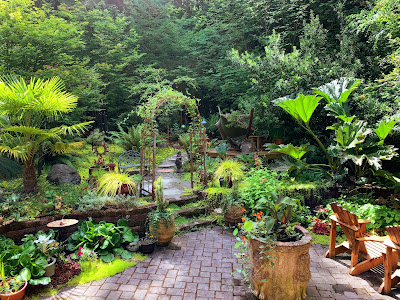Step into the enchanting world of gardening, where creativity and nature converge to create a harmonious sanctuary. As an avid gardener, I'm thrilled to guide you on the journey of creating and maintaining a breathtaking and eco-conscious garden that flourishes with life.
A beautiful garden not only offers aesthetic pleasure but also provides a haven for wildlife and contributes to a healthier planet.
In this article, I'll share expert tips, practical suggestions, and heartfelt advice to help you craft and sustain a garden that reflects your passion and values.
Embarking on Your Gardening Adventure
1. Define Your Garden Space
Just as an artist envisions a masterpiece, start by determining the area you'd like to transform into your garden. Whether it's a spacious backyard or a cosy balcony, understanding your space is essential.
2. Choose the Right Plants
Like choosing ingredients for a dish, select plants suited to your climate, soil type, and available sunlight. Native plants are eco-friendly choices that require less water and maintenance.
3. Plan Your Garden Layout
Just as a chef arranges ingredients for optimal flavour, plan the layout of your garden for visual appeal and functionality. Group plants with similar water needs together and consider using raised beds or containers.
4. Implement Sustainable Practices
Sustainable gardening is like preparing a nourishing meal—it benefits you and the environment. Collect rainwater, compost kitchen scraps, and avoid chemical pesticides. Incorporate mulch to retain moisture and suppress weeds.
5. Enhance Biodiversity
Similar to creating a diverse menu, introduce a variety of plants to attract beneficial insects and birds. Native flowers, herbs, and shrubs offer food and shelter for wildlife.
6. Cultivate Soil Health
A healthy garden starts with robust soil, much like a delicious meal begins with quality ingredients. Amend your soil with compost to improve structure, water retention, and nutrient content.
7. Mindful Watering
Watering your garden is akin to providing nourishment to your plants. Water deeply and infrequently to encourage deep root growth. Consider using a drip irrigation system or soaker hoses to minimize water waste.
8. Regular Maintenance Routine
Just as a chef maintains a kitchen, cultivate a regular garden maintenance routine. Prune, deadhead, and weed as needed to keep your garden tidy and thriving.
9. Embrace Integrated Pest Management
Similar to addressing pests in a kitchen, handle garden pests using integrated pest management (IPM) techniques. Encourage natural predators, like ladybugs and birds, to keep pest populations in check.
10. Practice Patience and Observation
Much like a chef letting flavours meld, observe your garden's evolution over time. Patience is key as you learn how your plants respond to different conditions and seasons.
Nurturing Sustainability and Beauty
1. Composting for a Greener Garden
Composting is the heart of a sustainable garden, much like the foundation of a sumptuous meal. Kitchen scraps, yard waste, and even paper can be transformed into nutrient-rich compost that enriches your soil and reduces waste.
2. The Art of Mulching
Mulching is the garnish that completes your garden, much like a finishing touch on a dish. Mulch helps retain moisture, suppress weeds, regulate soil temperature, and prevent erosion. Organic materials like straw, leaves, or wood chips are excellent choices.
3. Embracing Native Plants
Native plants are the essence of a thriving garden, just as local ingredients are central to a cuisine.
These plants have evolved to your region's climate and require less water and maintenance. They also provide habitat and food for local wildlife.
4. Water-Wise Gardening Practices
Water-wise gardening is like savouring every drop of a delicate sauce. Collect rainwater in barrels, choose drought-tolerant plants, and group plants with similar water needs together.
5. Attracting Beneficial Insects
Beneficial insects are the sous-chefs of your garden, aiding in pest control and pollination. Plant flowers like lavender, sunflowers, and bee balm to attract bees, butterflies, and other pollinators.
Final Thoughts
Congratulations, fellow gardener, for embarking on a journey that enriches your life and the environment. Just as tending to a garden is a labour of love, nurturing our planet is a responsibility we all share.
By crafting and maintaining a beautiful and sustainable garden at home, you contribute to a greener, healthier future. The joy of witnessing your garden flourish and evolve is akin to savouring the flavours of a well-prepared dish.
So, roll up your sleeves, dig your hands into the earth, and let your garden thrive as a testament to your dedication and passion.










0 Comments